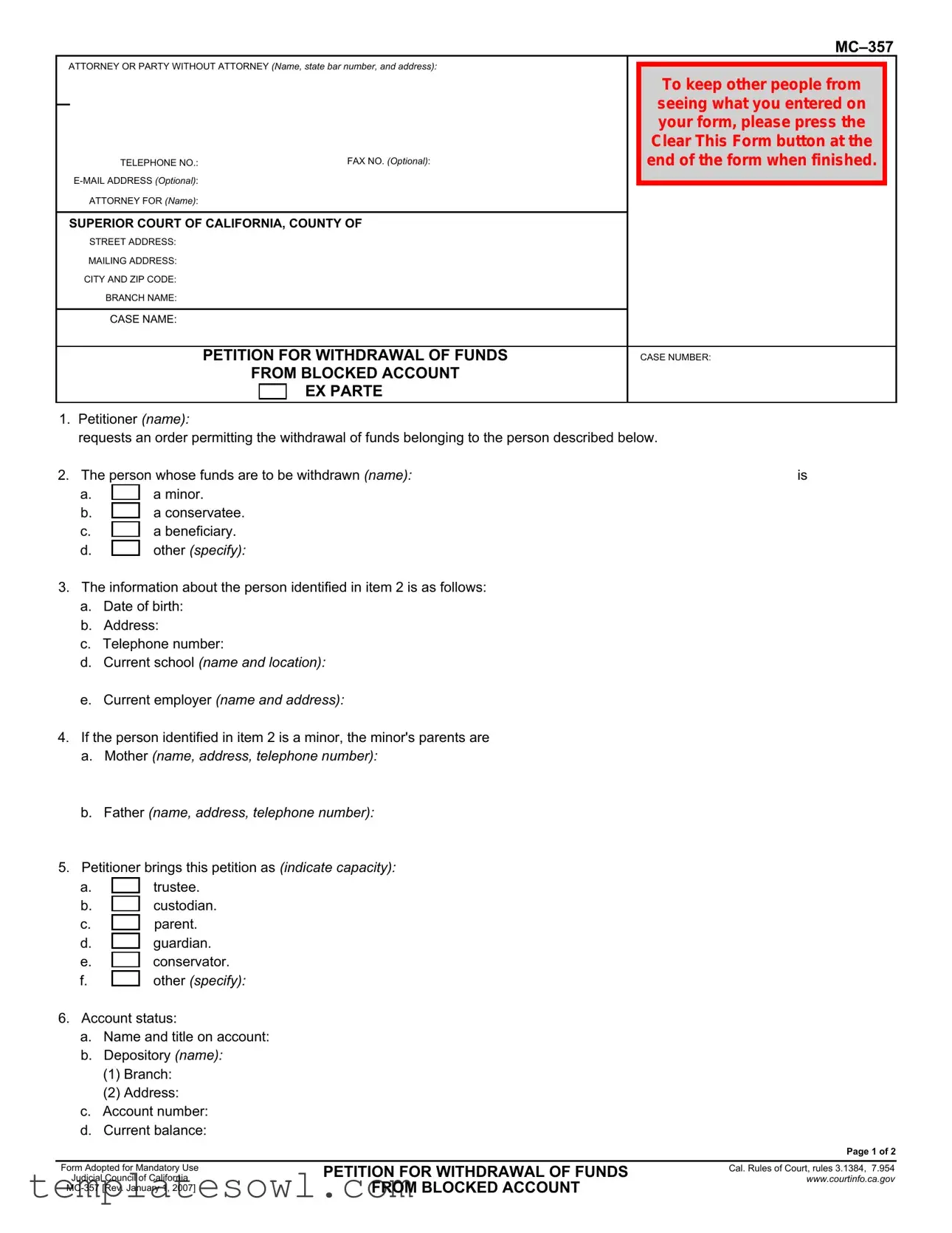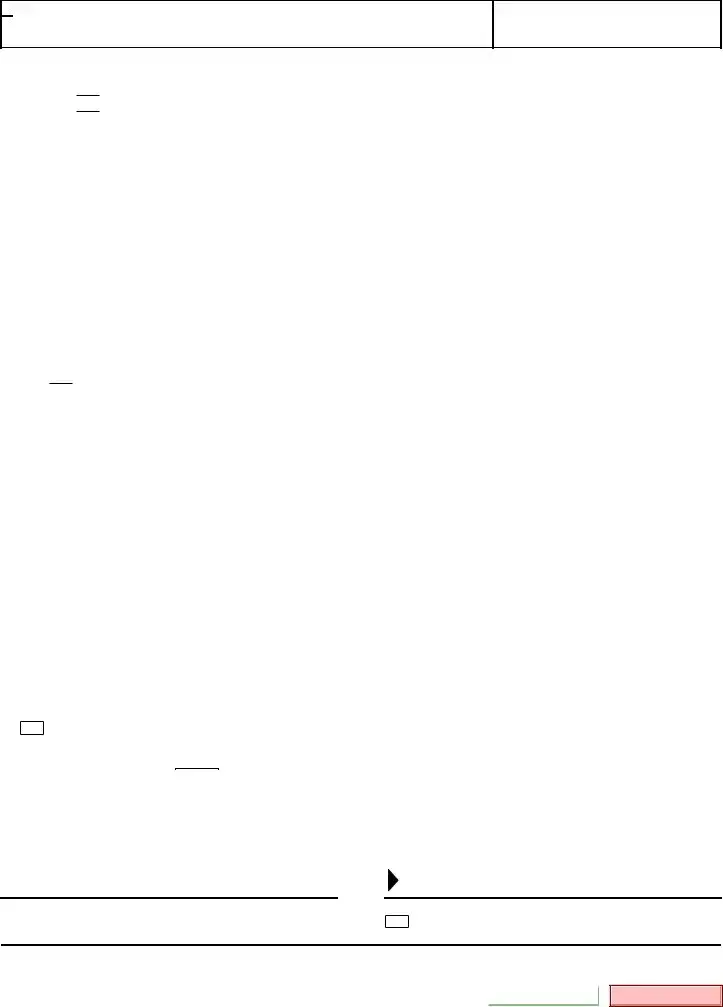What is the MC 357 form used for?
The MC 357 form, also known as "Petition for Withdrawal of Funds from Blocked Account," is utilized to request permission to withdraw funds from an account that has been blocked by the court. This form is applicable in situations involving minors, conservatees, or beneficiaries, where funds must be disbursed under specific legal circumstances.
Who can use the MC 357 form?
The MC 357 form can be used by various individuals, including trustees, custodians, parents, guardians, or conservators of the person whose funds are being requested for withdrawal. It is essential that the petitioner has the legal authority to act on behalf of the individual whose funds are locked in the blocked account.
What information is required on the MC 357 form?
To complete the MC 357 form, the petitioner must provide detailed information about themselves, the person whose funds they seek to withdraw, and the account status. This includes names, addresses, telephone numbers, birth dates, and details related to the specific bank account, such as the account number and current balance. Additionally, the petitioner must outline the reasons for requesting the withdrawal.
What are the eligibility criteria for requesting a withdrawal?
Eligibility for withdrawal generally depends on the status of the individual whose funds are held in a blocked account. For example, if the individual is a minor who has reached adulthood (18 years or older), or if there is a valid need for disbursement as described in the petition, the request may be granted. However, each request is reviewed case by case by the court.
How is the MC 357 form submitted?
The completed MC 357 form should be filed with the Superior Court of California in the appropriate county. The petitioner may need to attend a court hearing where a judge will review the request and determine whether to grant or deny the withdrawal of funds. It is advisable to check local court rules regarding submission procedures, as there may be specific guidelines depending on the jurisdiction.
What happens after submitting the MC 357 form?
After submission, the court will review the petition. Depending on the case, a hearing may be required. During the hearing, the petitioner may need to provide additional information or clarify their request. If the judge approves the petition, an order will be issued, allowing the withdrawal of funds as specified in the form.
Are there any fees associated with filing the MC 357 form?
There may be filing fees associated with submitting the MC 357 form, as is common with many court documents. Fees can vary by county and depend on the specifics of the case. It is recommended to check with the local court or its website for up-to-date information on fees and possible waivers for qualified individuals.


 a minor.
a minor. a conservatee.
a conservatee. a beneficiary.
a beneficiary.
 trustee.
trustee. custodian.
custodian. parent.
parent. guardian.
guardian. conservator.
conservator.


 None.
None.
 As follows:
As follows:
